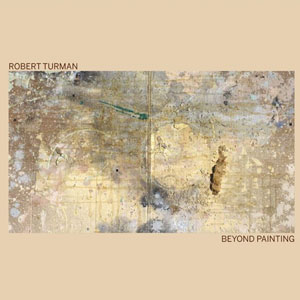Robert Turman, "Beyond Painting"
 Even though Turman began his music career in the early 1970s and co-founded NON with Boyd Rice, he has not been as prolific, nor has he garnered the same accolades as many of his contemporaries have. Recent collaborations with the likes of Jandek and Aaron Dilloway have lead to a resurgence of interest, and Beyond Painting is one of the products of this rediscovery. Presented here as a luxurious double LP reissue of a self-released CDR, Turman's work is given the recognition it deserves.
Even though Turman began his music career in the early 1970s and co-founded NON with Boyd Rice, he has not been as prolific, nor has he garnered the same accolades as many of his contemporaries have. Recent collaborations with the likes of Jandek and Aaron Dilloway have lead to a resurgence of interest, and Beyond Painting is one of the products of this rediscovery. Presented here as a luxurious double LP reissue of a self-released CDR, Turman's work is given the recognition it deserves.
The material was actually recorded back in 1990 but did not see the light of day until Turman self-released them as a CDR 20 years later.Two-plus decades after their initial creation, these pieces do not sound dated in the slightest, and in hindsight perhaps more progressive and prophetic than many from the era do.
It is on pieces like "First Quarter," with its light, echoing ambience and drifting feel that seems to herald the development of the isolationist sub-sub genre of minimalist music some years later.The repetitive drone and almost chanting voices element of "The Unforgiven" that, via its sporadic but noteworthy evolutions, conveys a similar sound and sense that the likes of Bill Laswell and Mick Harris would later work heavily within.
There is a certain darkness that resides within all of these pieces, but one that is sophisticated and restrained.On "Soft Self Portrait" the bleakness comes about amidst gentle horn-like tones and reversed melodies that results in a composition that is more haunting, rather than frightening.The layered, looped string sounds of "Beyond Painting" convey a similar feel, one that is a bit more tinged nostalgia rather than outright malignance.
For me though, the stand out piece was "Al-Qa'ida," with its vaguely jazz noir guitar and electronics structure that has more of a rhythmic throb to it, rather than the more spectral, textural ambience of the other pieces.From a similar cloth is "Reflux," with a more conventional synthesizer sound and cyclic sequenced melody at the forefront.As it goes on, the melodic pattern falls away to focus on a reverberating expanse and what sounds like echoing digital bells, one of the few moments that reflect the era in which it was recorded.
It is only that bell-like tone on "Reflux" that places this album at a specific point in time, because beyond that it sounds as if it could have been recorded yesterday.While the technological aspect of that might not be overly impressive, since this is not a work that was hung up on digital reverbs or synth presents of the era, it is more the sense of structure and composition that is so forward thinking.The swirling melodies and shifting layers resemble the top tier of artists working currently within this style of music, so considering this dates back nearly 24 years serves to emphasize the brilliance of Robert Turman as an artist and composer.
samples:
 



